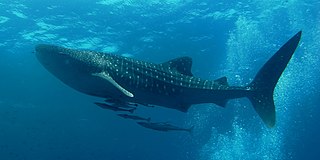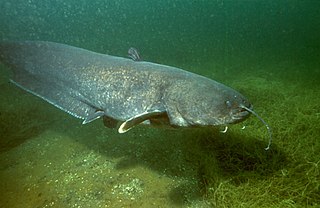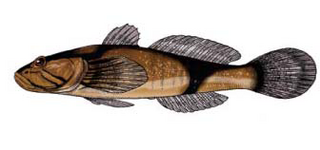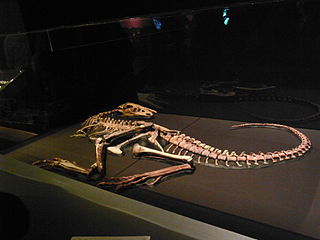
Osteichthyes, popularly referred to as the bony fish, is a diverse taxonomic group of fish that have skeletons primarily composed of bone tissue, as opposed to cartilage. The vast majority of fish are members of Osteichthyes, which is an extremely diverse and abundant group consisting of 45 orders, and over 435 families and 28,000 species. It is the largest class of vertebrates in existence today. The group Osteichthyes is divided into the ray-finned fish (Actinopterygii) and lobe-finned fish (Sarcopterygii). The oldest known fossils of bony fish are about 420 million years old, which are also transitional fossils, showing a tooth pattern that is in between the tooth rows of sharks and bony fishes.

The coelacanths constitute a now-rare order of fish that includes two extant species in the genus Latimeria: the West Indian Ocean coelacanth primarily found near the Comoro Islands off the east coast of Africa and the Indonesian coelacanth. They follow the oldest-known living lineage of Sarcopterygii, which means they are more closely related to lungfish and tetrapods than to ray-finned fishes. They are found along the coastlines of the Indian Ocean and Indonesia. The West Indian Ocean coelacanth is a critically endangered species.

The largemouth bass is a carnivorous freshwater gamefish in the Centrarchidae (sunfish) family, a species of black bass native to much of the United States And Northern Mexico. It is known by a variety of regional names, such as the widemouth bass, bigmouth bass, black bass, bucketmouth, largies, Potter's fish, Florida bass, Florida largemouth, green bass, Green trout, gilsdorf bass, Oswego bass, southern largemouth and (paradoxically) northern largemouth, LMB. The largemouth bass is the state fish of Georgia, Mississippi, and Indiana, the state freshwater fish of Florida and Alabama, and the state sport fish of Tennessee.

The whale shark is a slow-moving, filter-feeding carpet shark and the largest known extant fish species. The largest confirmed individual had a length of 12.65 m (41.5 ft) and a weight of about 21.5 t (47,000 lb). The whale shark holds many records for size in the animal kingdom, most notably being by far the largest living nonmammalian vertebrate. It is the sole member of the genus Rhincodon and the only extant member of the family Rhincodontidae which belongs to the subclass Elasmobranchii in the class Chondrichthyes. Before 1984 it was classified as Rhiniodon into Rhinodontidae.

The ocean sunfish or common mola is one of the heaviest known bony fishes in the world. Adults typically weigh between 247 and 1,000 kg (545–2,205 lb). The species is native to tropical and temperate waters around the globe. It resembles a fish head with a tail, and its main body is flattened laterally. Sunfish can be as tall as they are long when their dorsal and ventral fins are extended.

The shortfin mako shark, also known as the blue pointer or bonito shark, is a large mackerel shark. It is commonly referred to as the mako shark, as is the longfin mako shark. The shortfin mako is on record as the fastest-swimming shark, capable of bursts of speed up to 18.8 metres per second.

The arapaima, pirarucu, or paiche are any large species of bonytongue in the genus Arapaima native to the Amazon and Essequibo basins of South America. Genus Arapaima is the type genus of the family Arapaimidae. They are among the world's largest freshwater fish, reaching as much as 3 m (9.8 ft). They are an important food fish. They have declined in the native range due to overfishing and habitat loss. In contrast, arapaima have been introduced to several tropical regions outside the native range where they are sometimes considered invasive species. Its Brazilian Portuguese name, pirarucu, derives from the Tupi language words pira and urucum, meaning "red fish".
ASRA or Asra may refer to:

The Mekong giant catfish, is a large, critically endangered species of catfish in the shark catfish family (Pangasiidae), native to the Mekong basin in Southeast Asia and adjacent China. In Thai folklore, this fish is regarded with reverence, and special rituals are followed and offerings are made before fishing it.

The Carangidae are a family of fish which includes the jacks, pompanos, jack mackerels, runners, and scads.

The wels catfish, also called sheatfish, is a large species of catfish native to wide areas of central, southern, and eastern Europe, in the basins of the Baltic, Black, and Caspian Seas. It has been introduced to Western Europe as a prized sport fish and is now found from the United Kingdom all the way east to Kazakhstan and China and south to Greece and Turkey. It is a scaleless freshwater fish recognizable by its broad, flat head and wide mouth. Wels catfish can live for at least fifty years.
Liaoningosaurus is an unusual genus of ankylosaurian dinosaurs from the early Cretaceous period of China and is the earliest known ankylosaurid genus in the fossil record. It contains a single species, Liaoningosaurus paradoxus, and is represented by two fossil specimens collected from the Yixian Formation of Liaoning Province. L. paradoxus was unusual among advanced ornithischian dinosaurs in that it is speculated to have hunted or scavenged, with preserved gut contents showing that it may have eaten fish. Additionally, some features of its skeleton may suggest that it was partially aquatic.

The blobfish is a deep sea fish of the family Psychrolutidae. It inhabits the deep waters off the coasts of mainland Australia and Tasmania, as well as the waters of New Zealand.

The shortraker rockfish is an offshore, demersal species distributed from the southeastern Kamchatka Peninsula, Russia, to Fort Bragg, California. It attains lengths greater than one metre and weighs up to 20 kg. In the Gulf of Alaska, shortraker rockfish are sampled annually during longline surveys and are most abundant between depths of 300–400 metres (980–1,310 ft).

Benthophiloides brauneri is a species of goby, a benthophilic fish native to the fresh and brackish waters of the Black Sea, the Caspian Sea and the Sea of Azov as well as their surrounding rivers and estuaries. Despite the wide distribution, very few observations overall of this fish exist, and just one from the Caspian basin. It has been found in still waters at depths down to around 15 metres (49 ft). Males of this species can reach a length of 7.2 centimetres (2.8 in) SL while females only reach 5.1 centimetres (2.0 in) SL. This fish only lives for one year.

Benthophiloides is a genus of gobies widespread in the basins of the Black Sea and the Caspian Sea.

Raptorex is a dubious genus of tyrannosaurid dinosaur. Its fossil remains consist of a single juvenile specimen probably uncovered in Mongolia, or possibly northeastern China. The type species is R. kriegsteini, described in 2009 by Sereno and colleagues. The genus name is derived from Latin raptor, "robber", and rex, "king". The specific name honours Roman Kriegstein, a survivor of the Holocaust, whose son Henry Kriegstein donated the specimen to the University of Chicago for scientific study.

The Benthophilinae are a subfamily of gobies endemic to the Ponto-Caspian region. The subfamily includes about 50 species. The representatives of the subfamily have fused pelvic fins and elongated dorsal and anal fins. They are distinguished from the closely related subfamily Gobiinae by the absence of a swimbladder in adults and location of the uppermost rays of the pectoral fins within the fin membrane.


















